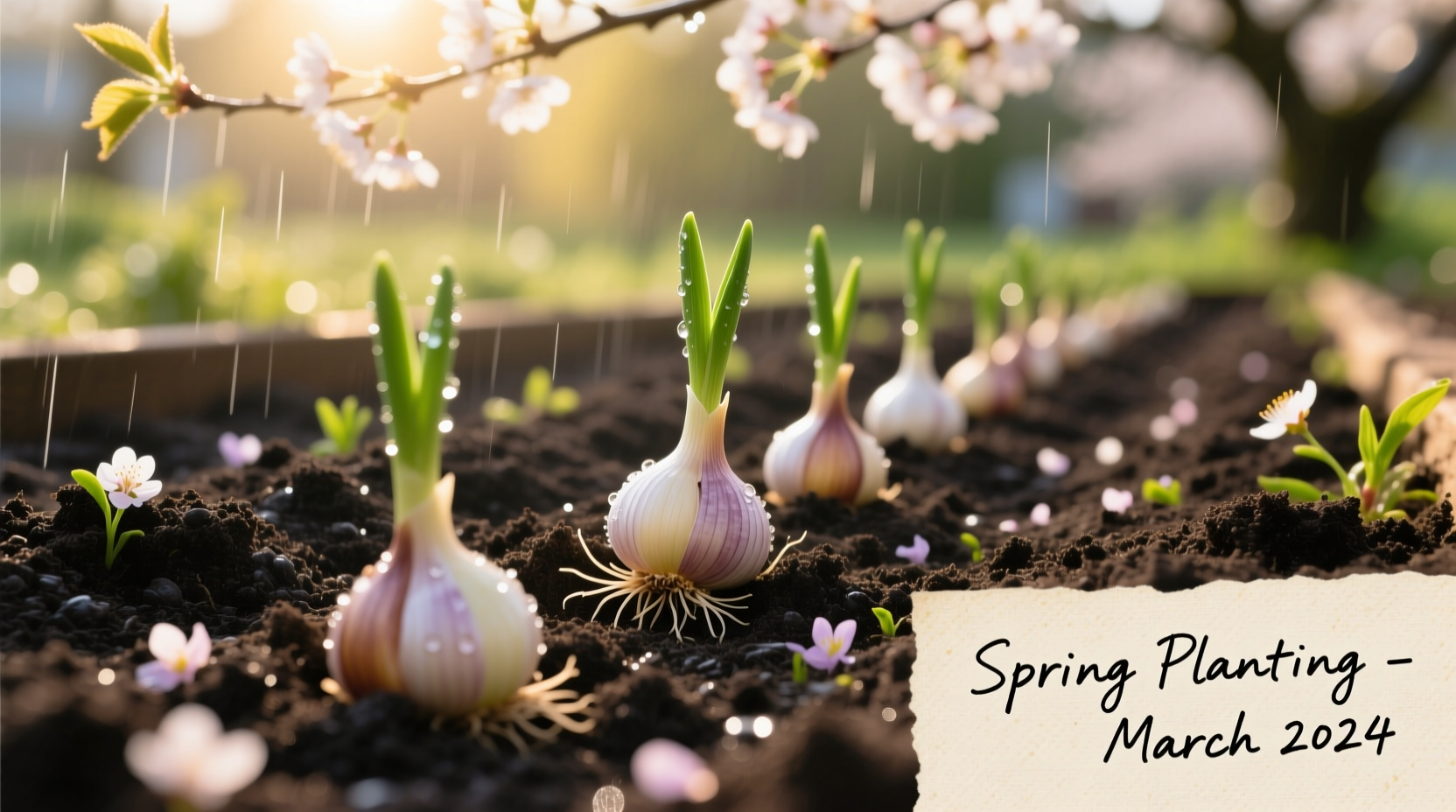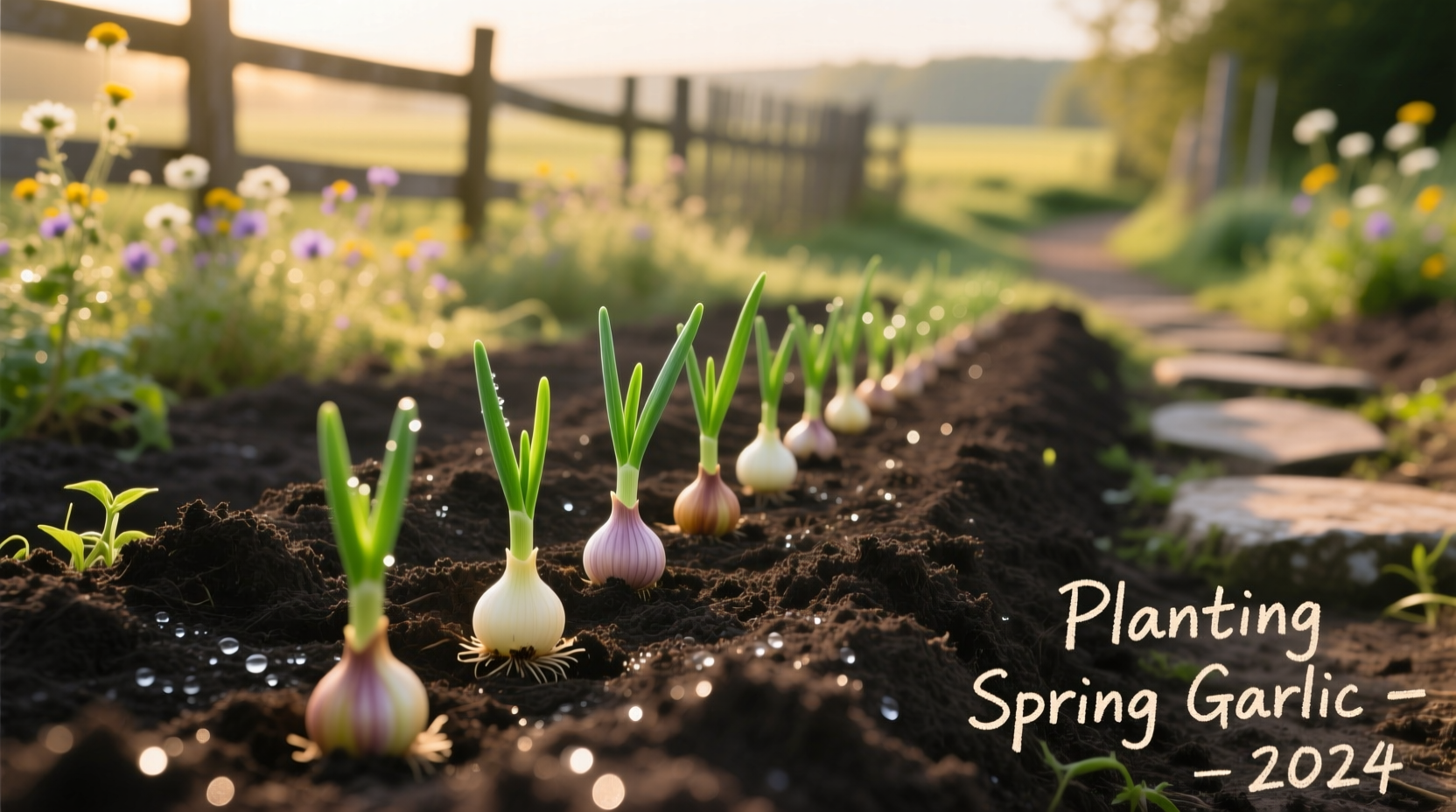Yes, you can successfully grow garlic in spring with proper techniques, though results differ from traditional fall planting. Spring-planted garlic typically yields smaller bulbs but produces delicious green garlic scapes and usable cloves within 60-90 days when using appropriate varieties and methods.
Many gardeners believe garlic can only be planted in fall, but with the right approach, spring planting delivers satisfying results. This guide reveals proven techniques for growing garlic when you've missed the fall window or live in regions with unpredictable winters. You'll learn which garlic varieties thrive when planted in spring, optimal soil preparation methods, and how to maximize your harvest despite the shorter growing season.
Why Spring Garlic Planting Works Differently Than Fall
Understanding the biological differences between spring and fall planting is crucial for success. Fall-planted garlic develops root systems before winter dormancy, then resumes vigorous growth in spring. Spring-planted garlic skips this cold period, resulting in different growth patterns. The key is selecting varieties that don't require prolonged cold exposure to form proper bulbs.
| Planting Method | Best Varieties | Harvest Time | Expected Yield | Cold Requirement |
|---|---|---|---|---|
| Fall Planting | Hardneck varieties | Mid-summer | Full-sized bulbs | 4-8 weeks below 40°F |
| Spring Planting | Softneck varieties, some hardnecks | Early-mid summer | Smaller bulbs or green garlic | Minimal to none |
Selecting the Right Garlic for Spring Planting
Not all garlic varieties perform well when planted in spring. Your best options include:
- Silverskin softnecks - Require minimal cold exposure and adapt well to spring planting
- Artichoke softnecks - More cold-tolerant than Silverskins but still viable for spring
- Creole varieties - Excellent choice for warmer climates with mild winters
- Some hardneck varieties - Particularly Porcelain types in colder zones
Avoid standard hardneck varieties like Rocambole in most spring planting scenarios, as they typically require extended cold periods to form proper bulbs. The University of Minnesota Extension confirms that softneck varieties generally outperform hardnecks when planted in spring due to their lower vernalization requirements.
Optimal Timing for Spring Garlic Planting
Plant garlic as soon as your soil can be worked in spring, typically when soil temperatures reach 40°F (4°C) at a 4-inch depth. This usually corresponds with when daffodils begin to sprout in your area. In most USDA zones, this means:
- Zones 3-5: Late March to mid-April
- Zones 6-7: Mid to late March
- Zones 8-10: February to early March
Planting too late reduces your growing season and yields smaller bulbs. The Cornell Cooperative Extension recommends planting spring garlic at least 6-8 weeks before your last expected frost date to allow sufficient root development.
Soil Preparation Essentials
Garlic thrives in well-draining soil rich in organic matter. Prepare your planting bed 1-2 weeks before planting:
- Test soil pH (ideal range: 6.0-7.5) and amend as needed
- Break up soil to 12-15 inches deep
- Mix in 2-4 inches of compost or well-rotted manure
- Add balanced organic fertilizer (5-10-10) according to package directions
- Create raised beds in areas with heavy clay soil
Avoid fresh manure which can cause disease issues. The Rodale Institute's organic gardening research shows that garlic planted in properly amended soil produces bulbs 25-40% larger than those in unamended soil.
Step-by-Step Spring Planting Process
Follow these steps for successful spring garlic planting:
- Separate cloves - Break bulb into individual cloves 1-2 days before planting
- Select quality cloves - Use largest, healthiest cloves (discard any with mold or damage)
- Planting depth - Place cloves 2 inches deep with pointed end up
- Spacing - Position cloves 4-6 inches apart in rows 12-18 inches apart
- Cover and mulch - Cover with soil and apply 2-3 inches of straw mulch
- Water - Water thoroughly after planting, then only when top inch of soil dries
Unlike fall planting, spring-planted garlic doesn't require heavy winter mulching. A light straw mulch helps maintain consistent soil moisture and temperature.

Care and Maintenance Through the Growing Season
Spring-planted garlic needs consistent care to maximize your harvest:
- Watering - Provide 1 inch of water weekly, increasing during bulb formation
- Weeding - Hand-pull weeds carefully to avoid damaging shallow roots
- Fertilizing - Apply nitrogen-rich fertilizer when leaves reach 6 inches tall
- Scaping - Remove flower stalks from hardneck varieties to direct energy to bulb growth
- Pest monitoring - Watch for onion maggots and thrips, especially in warmer weather
According to agricultural research from Oregon State University, spring-planted garlic benefits from foliar feeding with fish emulsion every 3-4 weeks to compensate for the shorter growing season.
Harvesting Your Spring-Planted Garlic
Timing your harvest correctly ensures maximum flavor and storage potential. Look for these signs:
- Lower leaves begin turning brown (typically 5-6 leaves remain green)
- Bulb wrappers become dry and papery
- Individual cloves fill out the wrapper
For spring-planted garlic, harvest typically occurs 60-90 days after planting, compared to 180-210 days for fall-planted. Gently dig bulbs using a garden fork, being careful not to pierce them. Cure bulbs in a warm, dry, shaded area with good air circulation for 2-3 weeks before storage.
Troubleshooting Common Spring Planting Issues
When growing garlic in spring, you may encounter these challenges:
- Small bulb size - Expected with spring planting; focus on green garlic harvest if bulbs remain small
- Poor bulb formation - Often due to insufficient cold exposure; try different varieties next season
- Premature bolting - Remove scapes immediately to redirect energy to bulb development
- Disease issues - Rotate planting location annually and ensure proper drainage
Remember that spring-planted garlic often produces excellent green garlic (young plants harvested before bulb formation) even when full bulbs don't develop properly. This flavorful alternative works wonderfully in cooking and extends your garlic harvest season.
Planning for Future Seasons
While spring planting works in a pinch, fall remains the optimal time for garlic cultivation. To maximize future harvests:
- Save your largest spring-planted bulbs for fall planting
- Rotate planting locations to prevent disease buildup
- Experiment with different varieties to find what works best in your climate
- Consider planting some cloves in both fall and spring to compare results
Many gardeners successfully use spring planting to maintain a continuous garlic supply while their fall-planted crop develops. This dual approach ensures you always have fresh garlic available throughout the growing season.











 浙公网安备
33010002000092号
浙公网安备
33010002000092号 浙B2-20120091-4
浙B2-20120091-4